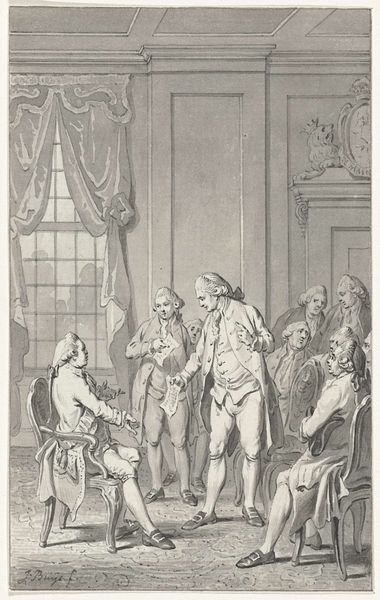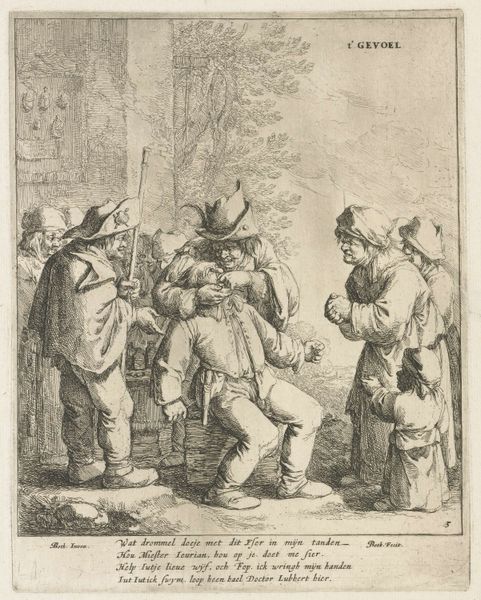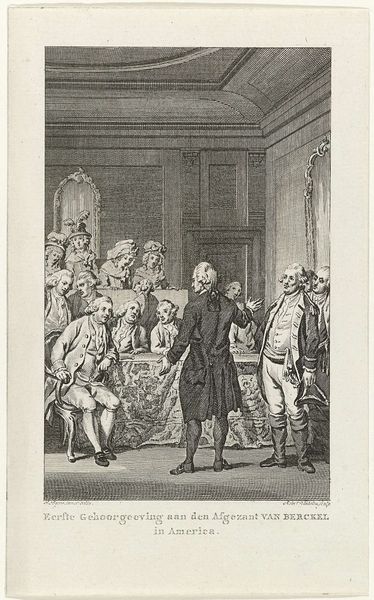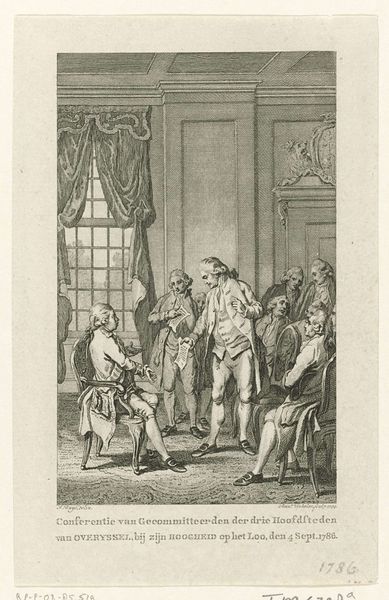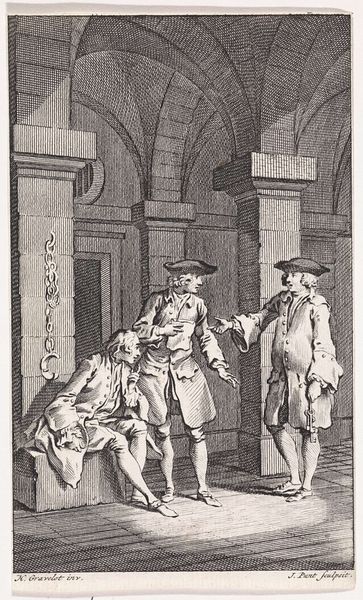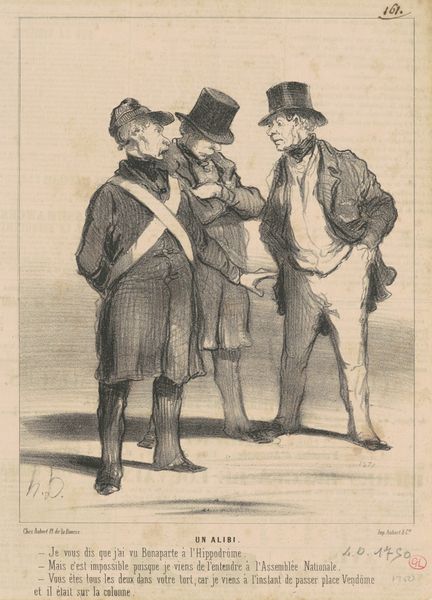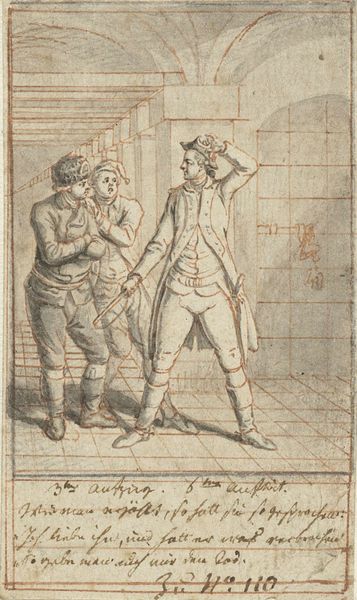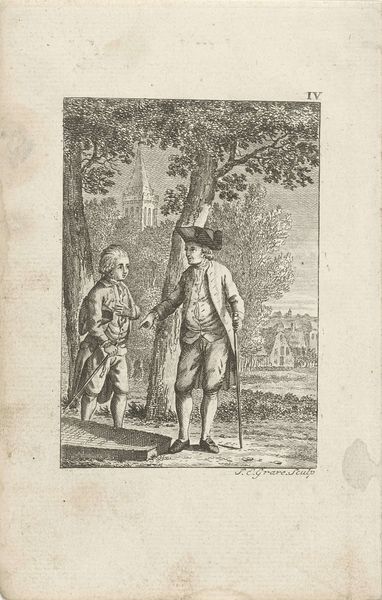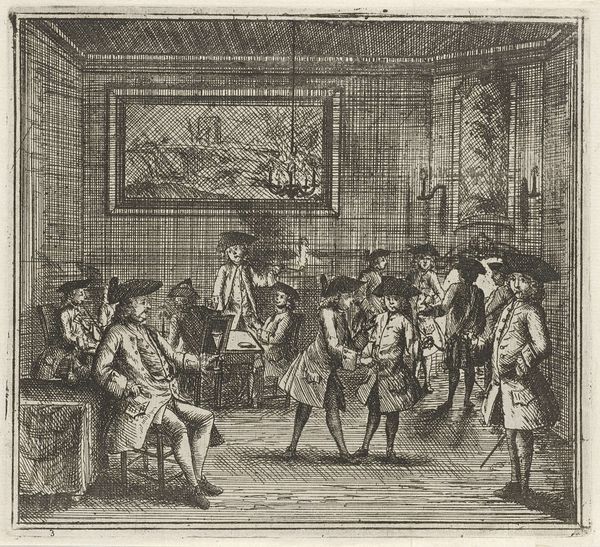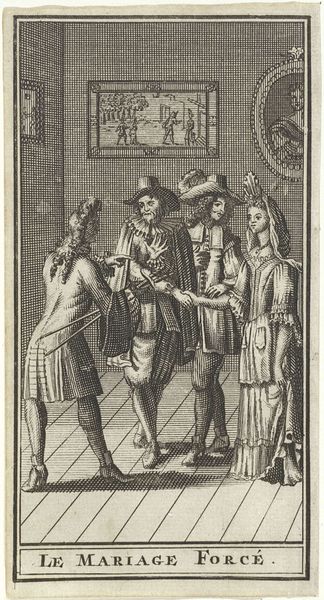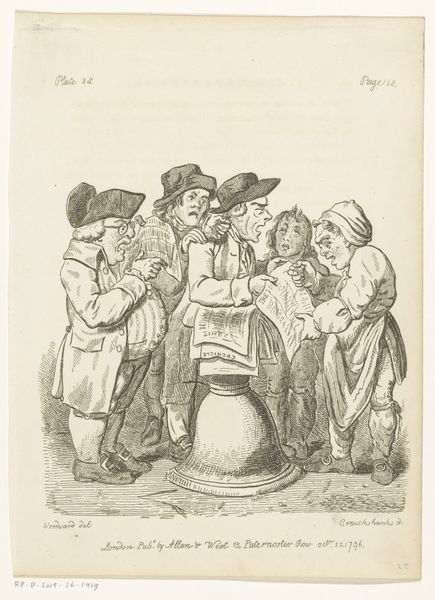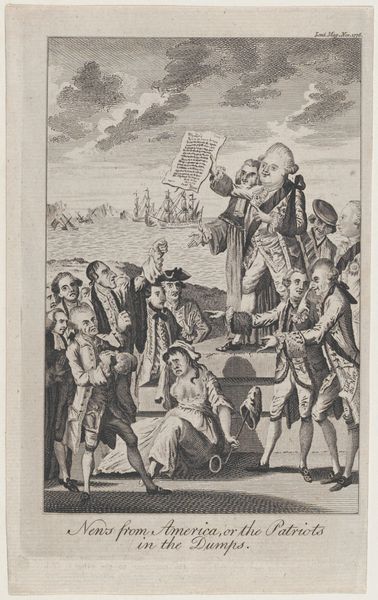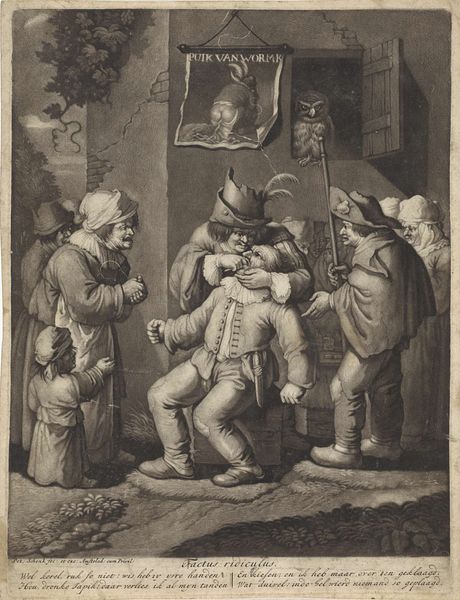
De afgunstige Brit verstoort de rustige Hollander, ca. 1780-1783 1780 - 1783
0:00
0:00
anonymous
Rijksmuseum
Dimensions: height 78 mm, width 53 mm
Copyright: Rijks Museum: Open Domain
Curator: Welcome. We are standing before an engraving from around 1780 to 1783, entitled "De afgunstige Brit verstoort de rustige Hollander," or "The envious Briton disturbs the peaceful Dutchman." Editor: It’s visually quite stark, wouldn't you agree? The lines are sharp, creating a sense of tension and unease despite the somewhat static composition. The characters almost seem trapped. Curator: The use of engraving allows for precise detailing, look at the way light and shadow define each figure differently to draw the viewer’s attention. See how the lines create textures and volume? There is clearly a deliberate focus on linear construction. Editor: And beyond the lines, there is the piece's blatant commentary on Anglo-Dutch relations during that period. The figures stand as allegorical representations of national tensions rooted in economic competition. Note how the Dutchman is portrayed as content, maybe complacent. Meanwhile the Briton looms over the scene with clear imperial intent. Curator: It's important to consider how the composition reflects Enlightenment ideals in artistic representations of nations and political entities, and perhaps something of the rising merchant classes in both places. The Dutch burgher's plain dress contrasts strikingly with the Briton's foppishness. Editor: Exactly, this visual language carries weight! This reflects anxieties about British interference, and the looming threat to Dutch trade. The relatively benign setting suggests the brewing tension right before the storm. It certainly suggests how images can function as potent political tools to mobilize feelings in early modern Europe. Curator: Indeed. Looking closely reveals much about technique and the deliberate arrangement of elements for emotional effect. Editor: I leave here with a sense of just how intertwined are culture, history and, let’s face it, conflict. A single print holding all that history. Curator: Yes, seeing beyond the immediate images opens an understanding that shifts from individual shapes to a collective idea and feeling, perfectly encapsulating both artistic and political viewpoints from the time.
Comments
No comments
Be the first to comment and join the conversation on the ultimate creative platform.

